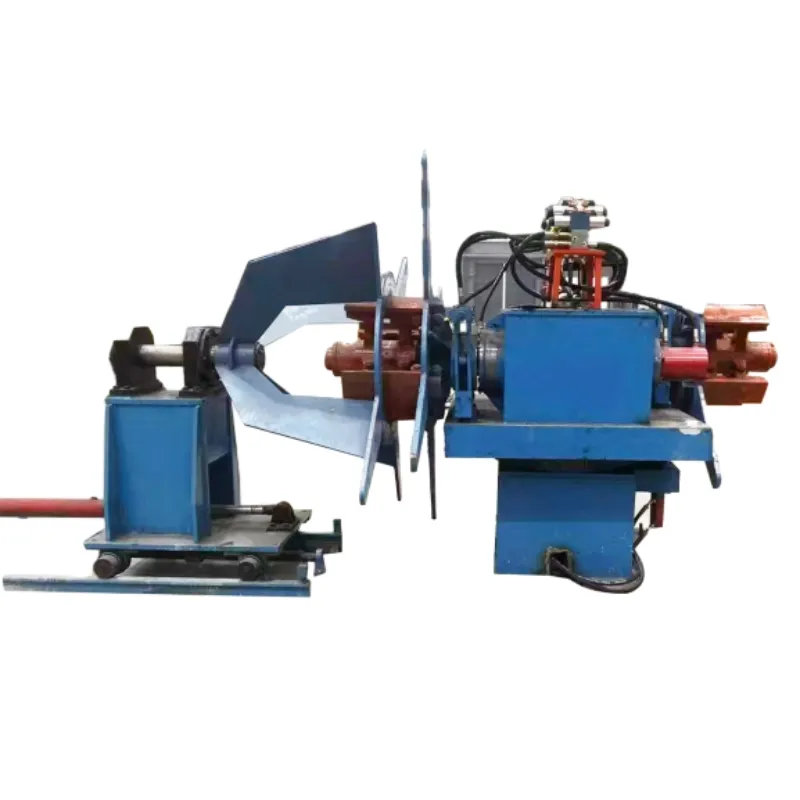Innovative Solutions for Track Roll Forming Machine Production Efficiency and Quality Enhancement
The Advancements in Track Roll Forming Machines
The manufacturing industry has seen significant advancements in technology, particularly in processes like roll forming. One specialized area within this domain is the production of track roll forming machines. These machines are specifically designed to create various types of tracks used in numerous industries, including automotive, construction, and rail systems. This article explores the workings, advantages, and future of track roll forming machines.
Understanding Track Roll Forming Machines
Track roll forming machines are sophisticated pieces of equipment tailored to shape and produce metal tracks through a continuous bending process. Unlike traditional manufacturing methods that may involve cutting or welding, roll forming offers a more efficient and streamlined approach. The basic concept involves feeding a flat strip of metal through a series of rollers, which progressively shape it into a desired profile.
The tracks produced can range from light-duty applications, such as guide rails in factories, to heavy-duty systems used in cranes and freight transportation. The machine's design can be customized based on the specific track requirements, such as dimensions, material type, and finish.
Advantages of Track Roll Forming Machines
1. Efficiency One of the primary advantages of utilizing track roll forming machines is their efficiency. The continuous production process reduces waste, as the material is transformed into the desired shape with minimal scrap. This not only lowers material costs but also enhances overall productivity.
2. Consistency Track roll forming machines produce uniform and precise profiles. This consistency is crucial when producing components that must fit together seamlessly, such as in rail systems where alignment is essential for safety and functionality.
3. Versatility These machines can work with various materials, including steel, aluminum, and other metals. Additionally, the machinery can be adjusted to create different track profiles, making them versatile tools for manufacturers looking to diversify their product offerings.
track roll forming machine

4. Cost-Effectiveness While the initial investment in a track roll forming machine may be significant, the long-term savings often justify the cost. With reduced labor, lower material waste, and high production speeds, manufacturers can expect a favorable return on investment over time.
5. Automation and Technology Integration Modern track roll forming machines often integrate advanced technologies such as computer numerical control (CNC) and automated systems. This integration allows for quick changes in production specifications and enhances user-controlled precision, reducing the likelihood of human error.
Applications in Various Industries
The applications of track roll forming machines are extensive. In the automotive industry, they are used to create components like tracks for sliding doors or sunroofs. The construction sector benefits from these machines, producing components such as window frames and structural framing used in buildings. In the railway industry, roll forming machines are essential for manufacturing tracks that can withstand heavy loads and extreme conditions, ensuring the safe transport of goods and passengers.
Future Prospects
As technology continues to evolve, the future of track roll forming machines appears promising. The integration of artificial intelligence and machine learning could revolutionize the design and operation of these machines, making them even more efficient and adaptable. Furthermore, as sustainability becomes paramount in manufacturing, advancements in track roll forming may focus on eco-friendly practices, such as using recycled materials or reducing energy consumption during production.
Conclusion
Track roll forming machines are a vital asset in modern manufacturing, offering efficiency, precision, and versatility across various industries. Their ability to produce high-quality tracks while minimizing waste and labor costs makes them an attractive option for manufacturers looking to enhance their production capabilities. As technology progresses, these machines will likely evolve further, catering to new demands and contributing to more sustainable manufacturing practices. The ingenuity of track roll forming machines exemplifies how innovation can reshape the manufacturing landscape, paving the way for a more efficient and effective future.
-
High Frequency Straight Seam Welded Pipe Production Line-BzZhou Xinghua Machinery Equipment Manufacturing Co., LTD.|Precision Welding, High EfficiencyNewsJul.30,2025
-
High Frequency Straight Seam Welded Pipe Production Line|BzZhou Xinghua|Precision Welding&EfficiencyNewsJul.30,2025
-
High Frequency Straight Seam Welded Pipe Production Line - BzZhou Xinghua|Precision Engineering&EfficiencyNewsJul.30,2025
-
High-Frequency Straight Seam Welded Pipe Production Line-BzZhou Xinghua Machinery Equipment Manufacturing Co., LTD.NewsJul.30,2025
-
High-Frequency Straight Seam Welded Pipe Production Line-BzZhou Xinghua Machinery Equipment Manufacturing Co., LTD.|Precision Manufacturing, High EfficiencyNewsJul.30,2025
-
High Frequency Straight Seam Welded Pipe Production Line-BzZhou Xinghua Machinery Equipment Manufacturing Co., LTD.|Precision Steel Pipe Manufacturing&Industrial EfficiencyNewsJul.29,2025


